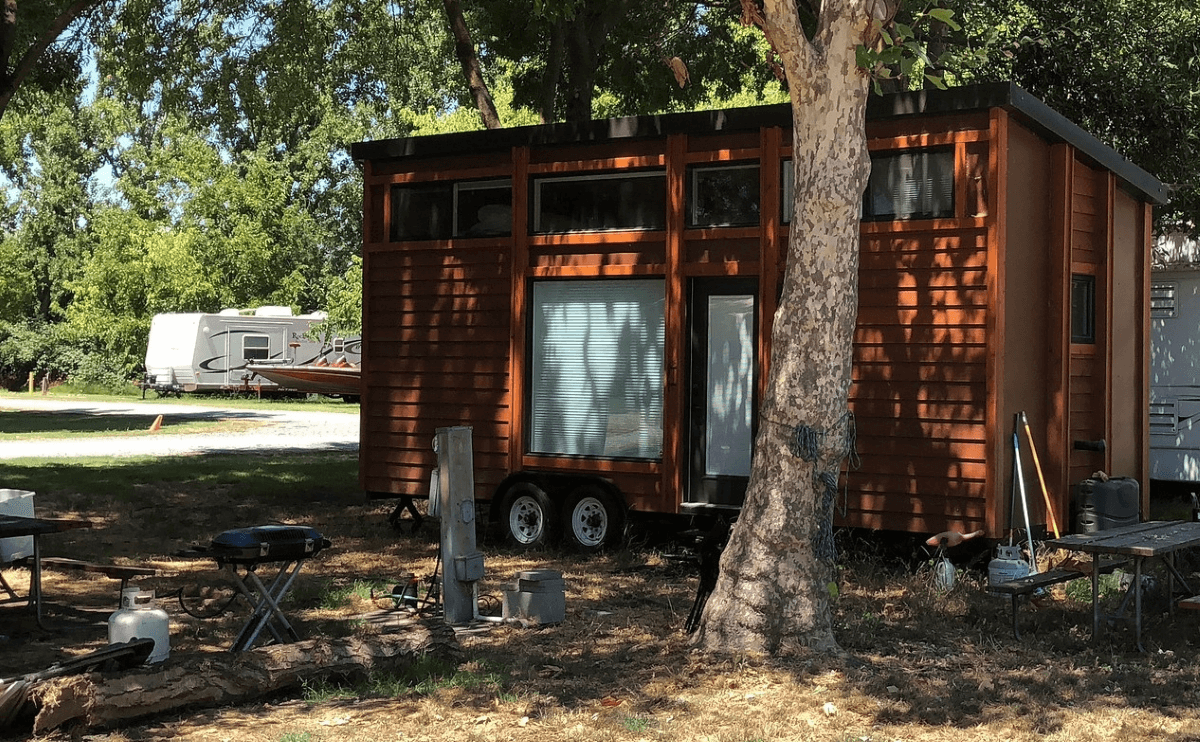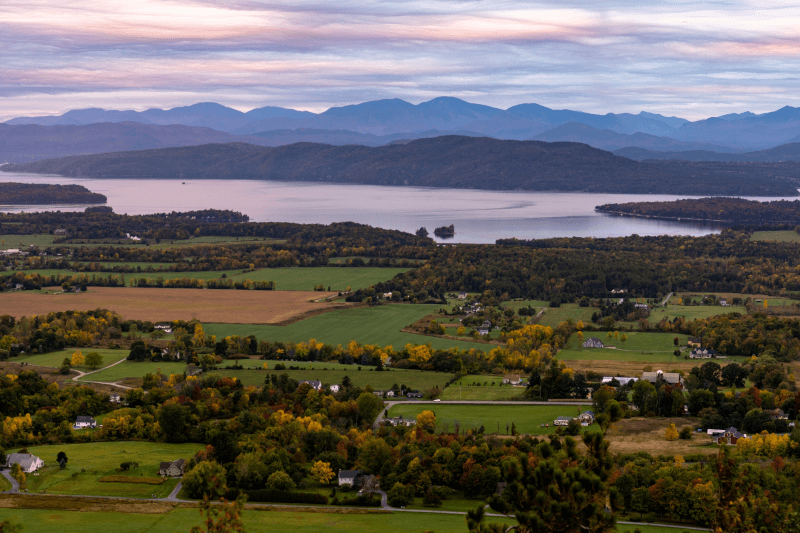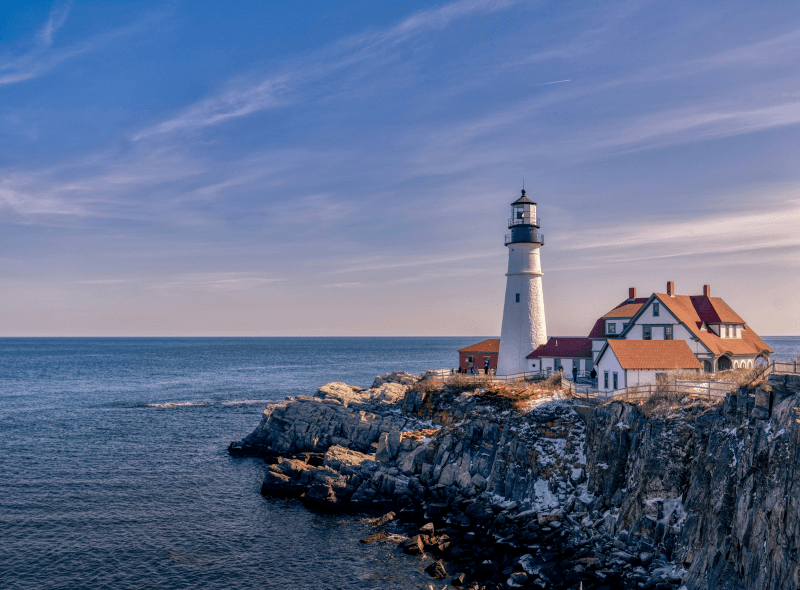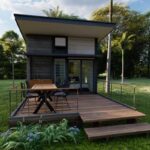
Looking to downsize? Some states are more ideal for a tiny house than others.
To mark TinyFest California this March, LawnStarter ranked 2024’s Best States for Tiny House Living.
We compared the 50 states on the ease of constructing a tiny home. We also looked at the suitability of building in an urban setting based on average yard acreages and in a remote environment based on off-grid lifestyle-friendliness, a separate LawnStarter ranking that consists of 23 key factors.
Find out where to build the tiny house of your dreams in our ranking below. To learn how we ranked the states, see our methodology.
Contents
State Rankings
See how each state fared in our ranking below.
IMPORTANT: Definitions of a “tiny house” vary widely among states, counties, and even municipalities. Some consider a tiny house an Accessory Dwelling Unit (ADU), while others restrict the size of the structure to 400 or 600 square feet. Further restrictions may depend on whether the structure sits on a foundation or wheels, the type of land where the structure is built, and whether the tiny house’s placement on a lot is temporary or permanent. State building codes and local zoning laws add an extra layer of complexity. It’s therefore important to check your state, county, and local policies prior to constructing or purchasing a tiny house.
Top 5 Close Up
Check out the slideshow below for highlights on each of our top 5 states.
Key Insights
For best results, build your tiny house on the eastern half of America.
States like Vermont (No. 1), Arkansas (No. 3), and Minnesota (No. 5) offer the most ideal conditions for compact dwellings. Our top performers boast ample land for those looking to build in more crowded areas and great environments for self-reliant tiny-house dwellers preferring more remote settings.
Not every state makes it easy to build tiny houses on its soil, though. Unfortunately, the 8 states that have a variety of restrictions on tiny homes — except Maryland (No. 41) and Nevada (No. 42) — occupy the 10 worst spots in our ranking.
If not for the red tape, some of these bottom states actually would make ideal candidates for tiny house living. Iowa (No. 44) leads all 50 states in off-grid lifestyle-friendliness, for example, while West Virginia (No. 43) outranks 41 states in yard acreage.
States where tiny houses are unregulated or require building permission crammed into the middle of our ranking, boosted by higher scores in the “Urban Lifestyle” and “Remote Lifestyle” categories. They include states like New Hampshire (No. 22), Mississippi (No. 23), and South Dakota (No. 26).
Ask The Experts
Tiny houses have ballooned in popularity over the years, but they aren’t for everyone.
To help prospective and new tiny house dwellers, we turned to a panel of experts for tips on navigating the tiny house landscape. Read their thoughts below.
- What are 3 key considerations homeowners should make before committing to tiny house living?
- What are the top 3 benefits and top 3 downsides of buying a pre-manufactured tiny house compared with designing and building one from scratch?
- How can tiny homes impact local housing markets, if at all?
- Are tiny house villages a good use of urban space in big cities? Why or why not?
- Are tiny house villages a good solution for alleviating homelessness? Why or why not?



What are 3 key considerations homeowners should make before committing to tiny house living?
The three considerations I would suggest for a potential tiny house dweller:
1. Where do you picture yourself in five years? In other words, are you looking for this to be a short-term endeavor, which is fine, or a long-term decision? This may help with deciding on renting or committing to building and/or buying your own dwelling.
2. Can you comfortably pare down your stuff to what you’d take for a week to a hotel? If you don’t know, try it. Otherwise, realize you’ll be paying a monthly fee for a storage unit somewhere.
3. Consider how you primarily aim to spend your time. If it’s exploring the great outdoors, no problem. If it’s mainly being inside with your significant other, you might want to envision how that will be in a small space.
What are the top 3 benefits and top 3 downsides of buying a pre-manufactured tiny house compared with designing and building one from scratch?
Pre-fab manufactured tiny house benefits:
- Quick.
- They meet building codes (for a pre-fab) which is a huge benefit if you’ve never built anything.
- Relatively inexpensive.
Pre-fab manufactured tiny house downfalls:
- Not personalized.
- May have challenges finding a location that allows pre-fabs.
- In some areas, there aren’t enough manufacturers for demand.
How can tiny homes impact local housing markets, if at all?
We are in a housing crisis, so any type of incremental housing can help fill the need. Many cities across the country are legalizing Accessory Dwelling Units (which can be tiny houses) to help with affordable workforce housing. But much more needs to be done. I have never heard of tiny houses ruining a housing market — if anything, we need way more.
Are tiny house villages a good use of urban space in big cities? Why or why not?
Tiny house villages done correctly can be a huge asset to urban areas.
The opposition suggests that greater density is needed and aims for apartment complexes, etc.
However, my research finds that the American Dream is alive and well and that tiny houses, though small, meet a desire for one’s own detached house with a bit of a yard. In other words, they are more affordable and sustainable than your typical home, yet still meet the cultural preference for housing in the U.S.
Are tiny house villages a good solution for alleviating homelessness? Why or why not?
There are many factors that impact whether a tiny house village for the homeless is a “success” or not. However, done correctly, they are an excellent tool for addressing homeless.
Primarily, tiny house villages again meet the cultural preference for single-family detached units, are seen as appealing, and thus, do not face the same NIMBY-ism (Not In My Backyard) sentiment as other types of housing to address homelessness.
Having community support — rather than opposition — is essential for developing programs to help the homeless, and this type of design and/or development is generally well-received.

What are three key considerations homeowners should make before committing to tiny house living?
1. Whether or not the lifestyle is attainable for them long-term.
2. Who do they live with, what is their dynamic like, and would they work well together in a small space?
3. Homeowners should talk to current tiny home dwellers to learn about their experiences — benefits, challenges, etc. — of tiny home living.
How can tiny homes impact local housing markets, if at all?
Tiny homes offer a more affordable alternative to traditional single-family homes that dominate many communities.
Housing shortages are being felt across the country, in virtually every state and every town. Tiny houses can add to the housing inventory in an environmentally sensitive way.
They are also more attainable for many, including students, young professionals, and those on fixed incomes.
Are tiny house villages a good use of urban space in big cities? Why or why not?
This is very subjective to the characteristics of the city itself, but generally speaking, tiny homes offer a way to gently add density in urban areas. For example, an existing single-family home on a large lot could incorporate a tiny home as an accessory dwelling unit (if zoning allows) to add an additional dwelling unit to their property.
That said, important factors to consider are the impact on parking, the impact of additional people in a neighborhood on schools and other services and/or infrastructure, and the environmental impact of additional impervious services in a city.
Are tiny house villages a good solution for alleviating homelessness? Why or why not?
Tiny homes for alleviating homelessness have proved to be a successful model in many communities.
Homelessness is an extremely complicated challenge with no single solution. However, tiny house villages have been utilized as a tool for transitional housing and a way to help create a sense of agency for those experiencing homelessness.
Important to the success of these villages are:
- A strong management plan.
- Connecting residents to additional resources like healthcare and job training.
- Access to public transportation.
Behind the Ranking
First, we determined the factors (metrics) that are most relevant to rank the Best States for Tiny House Living. We then assigned a weight to each factor based on its importance and grouped those factors into 3 categories: Legality, Space, and Lifestyle. The categories, factors, and their weights are listed in the table below.
For each of the 50 U.S. states, we then gathered data on each factor from the sources listed below the table. (Click the “Notes” dropdown below for additional information.)
Finally, we calculated scores (out of 100 points) for each city to determine its rank in each factor, each category, and overall. A state’s Overall Score is the average of its scores across all factors and categories. The highest Overall Score ranked “Best” (No. 1) and the lowest “Worst” (No. 50).
Notes:
- The “Worst” among individual factors may not be No. 50 due to ties.
- The “Off-Grid Lifestyle Index” metric is a separate LawnStarter ranking based on 23 metrics listed in this methodology.
- Scores for the “Tiny House Legality” metric were awarded to the states as follows:
- 0 = Restricted
- 1 = Unregulated
- 2 = Legal With Permit
- 3 = Legal
- Although Maryland and Nevada scored lower overall than several worse-ranking states, Maryland and Nevada were ranked No. 41 and No. 42, respectively, based on their higher “Legality” scores.
Sources: Federal Housing Finance Agency, LawnStarter studies, and World Population Review
Final Thoughts
You may not have to cross state lines — or even streets — to build your tiny home. If your state or city allows it (make sure to check), you might be able to park your little crib on wheels right in your backyard.
If that’s the case, these big and small upgrades to your lawn can enhance your newly scaled-back life:
- Use vertical space by installing a plant wall, a classic space-saving technique, inside or outside your tiny house.
- Grow a container garden that’s easy to reconfigure, or hang pots on hooks.
- Urban tiny-house dwellers can be self-sustaining, too, by planting an urban garden.
- Even a tiny house needs privacy and security. Explore the best fences for small spaces.
- Many Americans choose to live in a tiny home for environmental reasons. Extend your eco-consciousness to your yard by xeriscaping or installing “green” grass alternatives.
- Is your plot as small as your tiny house? Maximize curb appeal with our landscaping ideas for small yards.
Other helpful tips:
- Don’t need all the bells and whistles of a tiny house? Consider building a she shed instead.
- Not sure if a tiny house is right for you? Try one out by renting one through Airbnb or Glamping Hub.
- Discover other useful gardening hacks for tiny-house dwellers.
A local LawnStarter pro can help you prep the land for your tiny house. Get a customized instant quote today.
Main Photo Credit: Nicolás Boullosa (cropped) / Flickr / CC BY 2.0 DEED










